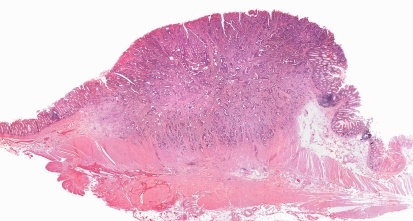
CAS recently organized a symposium titled "Emerging Therapeutics at the Intersection of Biology and Chemistry." Held during ACS Fall 2023 at San Francisco's Moscone Center under the ACS Technical Division of Multidisciplinary Program (MPPG), the event provided a valuable platform for knowledge exchange and insightful discussions.
Dr. Gilles Georges, CAS Chief Scientific Officer, opened the symposium by outlining the CAS mission and showcasing its data analytics and exceptional talents. He highlighted broad scientific content coverage, connections, and unique technology that establishes it as a hub for knowledge sharing. He introduced the process by which our expert scientists extract insights through novel connections across disparate datasets.
Exploring the evolving landscape of immuno-oncology: A data-driven analysis of emerging concepts and therapeutic targets
Dr. Sabina Scott, a CAS information scientist, shared the trend analysis of immuno-oncology publications based on the CAS Content Collection™. Recently, research interest and publications in immuno-therapy have grown, but how can someone identify the right signals from the noise? To detect emerging concepts, a combination of natural language processing (NLP) technology and human intelligence is used to evaluate each document and verify similar content within a broader set of retrieved answers. Many of these emerging concepts are in the areas of immune-oncology biomarkers, types of target proteins, types of therapeutics, and biological mechanisms.

Immune responses and memory to SARS-CoV-2 and COVID-19 vaccination: Lessons for future vaccines
From La Jolla Institute for Immunology, Dr. Shane Crotty's presentation took center stage, offering a profound exploration of the latest discoveries in COVID-19 immunity and vaccine development. He shared their research discoveries of how acute and memory T cells, antibodies, and memory B cells respond to SARS-CoV-2 infections and vaccines. He then discussed their results by analyzing multiple compartments of circulating immune memory to SARS-CoV-2 from several hundreds of COVID-19 cases over 8 months, including memory B cells, antibodies, CD4+ T cells, and CD8+ T cells. Their findings from assessing humoral and cellular immune memory to four COVID-19 vaccines were another valuable gain. His session provided a timely perspective on the global challenge, introducing the concept of germinal centers, and underscoring their pivotal role in generating immunity upon vaccine introduction. This perspective illuminated the intricate mechanisms of immune response, resonating strongly with the audience given the worldwide concern surrounding the pandemic.

Antibody-drug conjugates: The rising drug class for targeted therapy
Dr. Yacid Rodriguez, representing CAS, delved into the potential of merging biology and chemistry through antibody-drug conjugates (ADCs). Antibody-drug conjugates (ADC) are a quickly rising class of biopharmaceuticals for highly targeted disease treatment. They consist of a monoclonal antibody connected to a small molecule drug with a stable linker. ADCs are primarily used for cancer treatment and target specific antigens to kill cancer cells without healthy tissue damage.
The research team used data from the CAS Content Collection to provide a landscape view and outline trends and challenges in the research advancement regarding ADCs. Scientific publications were identified and analyzed with respect to factors such as time, geography, linker technologies, along with payload selection and loading methods. ADC development pipelines, along with their clinical applications in disease therapeutics, are also examined. Understanding the current knowledge of the field will help guide further refinement and development for successful future ADC technologies.

Exosomes: Nature's lipid nanoparticles, a rising star in drug delivery and diagnostics
Dr. Andy Chen, a CAS information scientist, offered insights into the impactful realm of exosomes in therapeutic and diagnostic applications. Exosomes are a subgroup of nanosized extracellular vesicles enclosed by a lipid bilayer membrane and secreted by most eukaryotic cells. Their distinctive properties: innate stability, low immunogenicity, biocompatibility, and good biomembrane penetration capacity, allow them to function as superior natural nanocarriers for efficient drug delivery.
Dr. Chen shared the insights developed based on data from the CAS Content Collection and provided a landscape view of the current state and trends in research advancement on exosome applications in therapeutics and diagnostics across time, geography, composition, cargo loading, and development pipelines. He hopes that their work will be useful for understanding the current knowledge in the field of exosome medical applications to further solve the remaining challenges in fulfilling their potential. To learn more about the emerging landscape of exosomes, explore the CAS Insights Report which reveals the opportunities and challenges ahead.

Antibody oligonucleotide conjugates: Development of AOC 1001 for the treatment of myotonic dystrophy
Dr. Son Lam, the Director of Chemistry from Avidity Biosciences, shared an innovative drug candidate - an antibody oligonucleotide conjugate (AOC 1001) targeting Myotonic Dystrophy Type 1 (DM1), offering a glimpse into the future of medical intervention. Dr. Lam elaborated on how they used antibodies for targeted delivery of the oligonucleotide drug, ensuring specificity and stability.
There are more than 40,000 DM1 patients in the U.S., but none approved the drug for this type of disease. The AOC 1001 is designed to target underlying toxic Myotonin-protein kinase (DMPK) mRNA with a siRNA molecule. Preclinical studies showed this drug encompasses good safety and tolerability, targeted delivery to muscle, remarkable reduction of DMPK mRNA, and impact on disease mechanisms. Currently, AOC 1001 is Phase ½ development. Dr. Lam also introduced other two antibody oligonucleotide conjugates drugs, AOC 1044 and AOC 1020, targeting Duchenne Muscular Dystrophy (DMD) and Facioscapulohumeral muscular dystrophy (FSHD), respectively.

PEGylated lipid nanoparticle formulations: Immunological safety and efficiency perspective
Dr. Qiongqiong Angela Zhou's discussion on PEGylated lipid nanoparticles revealed their advantages in drug delivery while highlighting an area that warrants further attention. She stressed the importance of understanding how polyethylene glycol (PEG) triggers immune responses and its potential implications for future drug development. Angela presented an overview based on the analysis of data from the CAS Content Collection regarding the PEGylated LNP immunogenicity and overall safety concerns. Based on the literature review, she also summarized how various structural parameters of the PEG-lipids affect the immune responses and activities of the LNPs with regard to their efficiency in drug delivery. Dr. Zhou’s presentation serves as a message to the scientific community, calling for more research efforts in understanding PEG immunity. To learn more about PEGylated lipid nanoparticles and their immunogenicity concerns, explore our brief CAS Executive Summary and the more detailed peer-reviewed journal article in Bioconjugate Chemistry.

Looking forward
The symposium fostered meaningful discussions, enabling attendees to interact with experts and grasp cutting-edge advancements. It underscored the crucial role of uniting biology and chemistry to create innovative solutions for evolving medical challenges.
Gain new perspectives for faster progress directly to your inbox.








